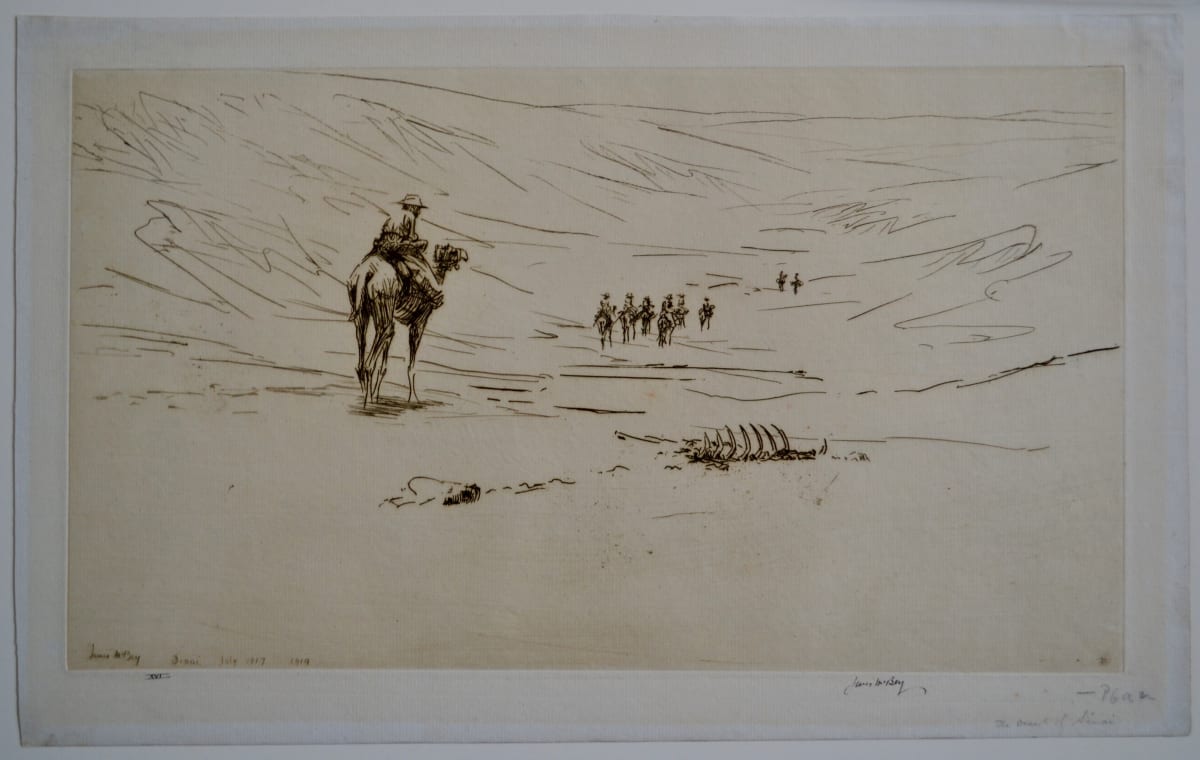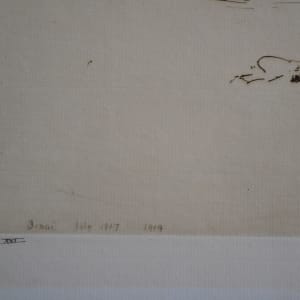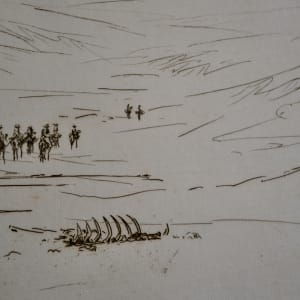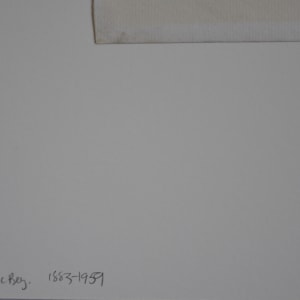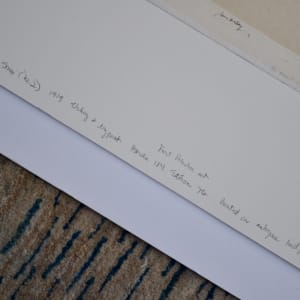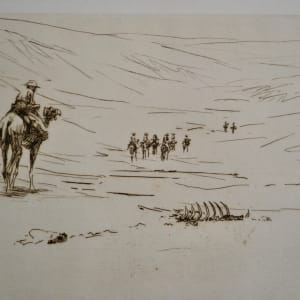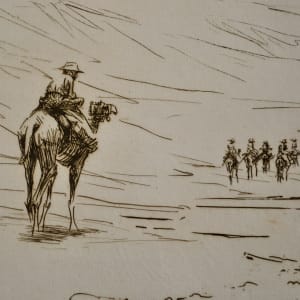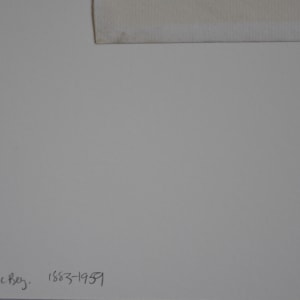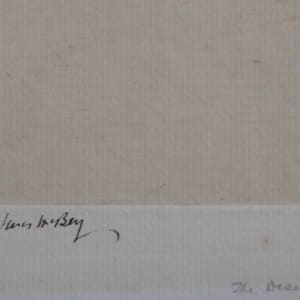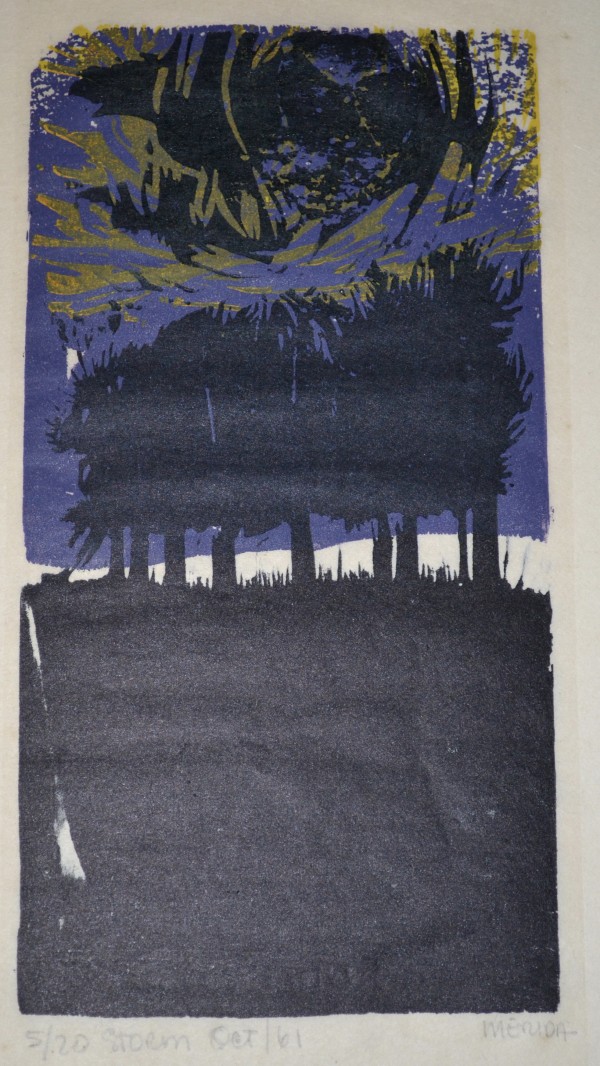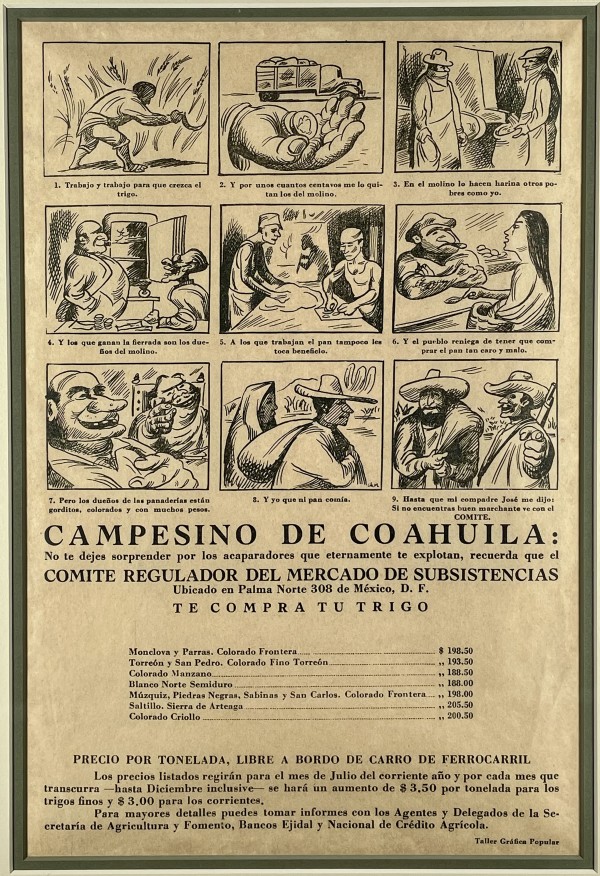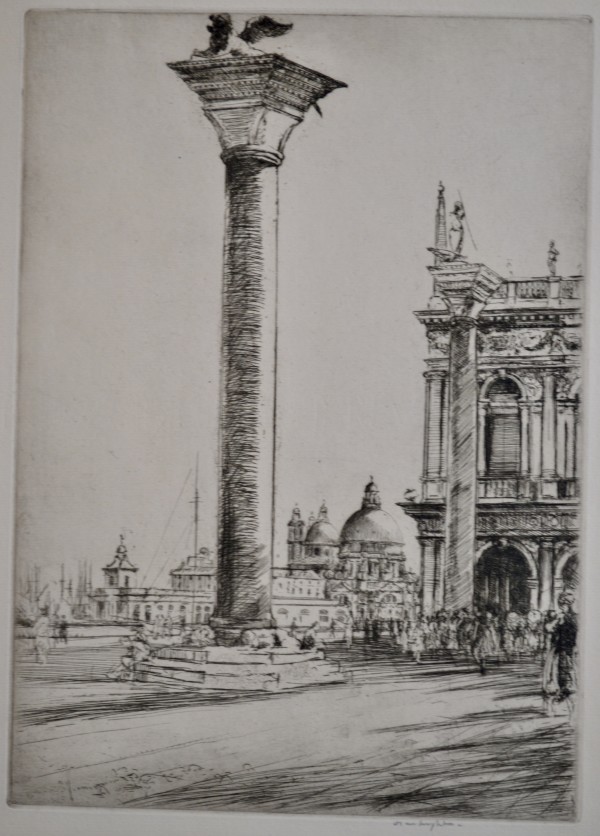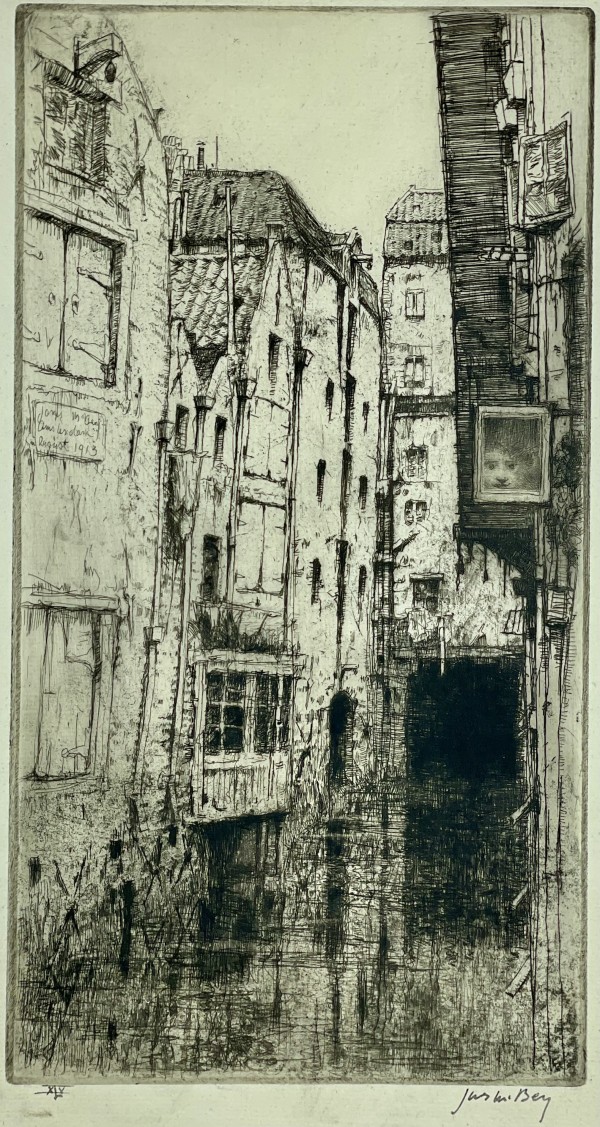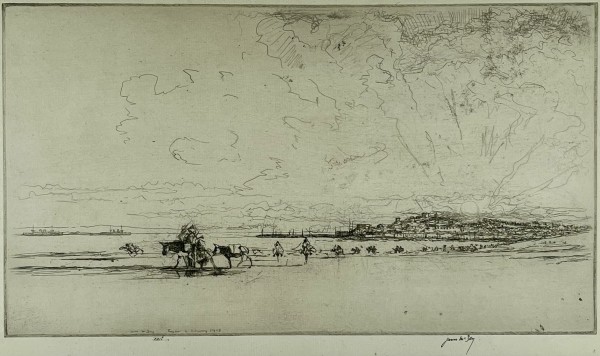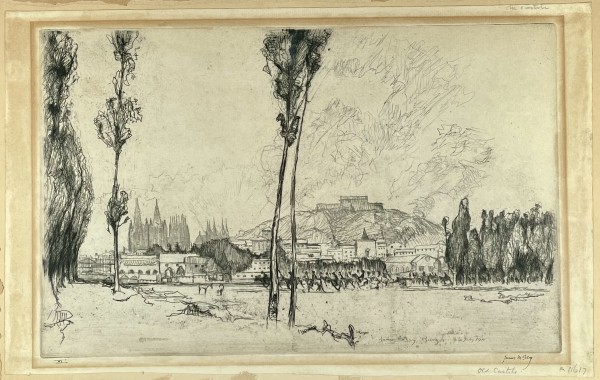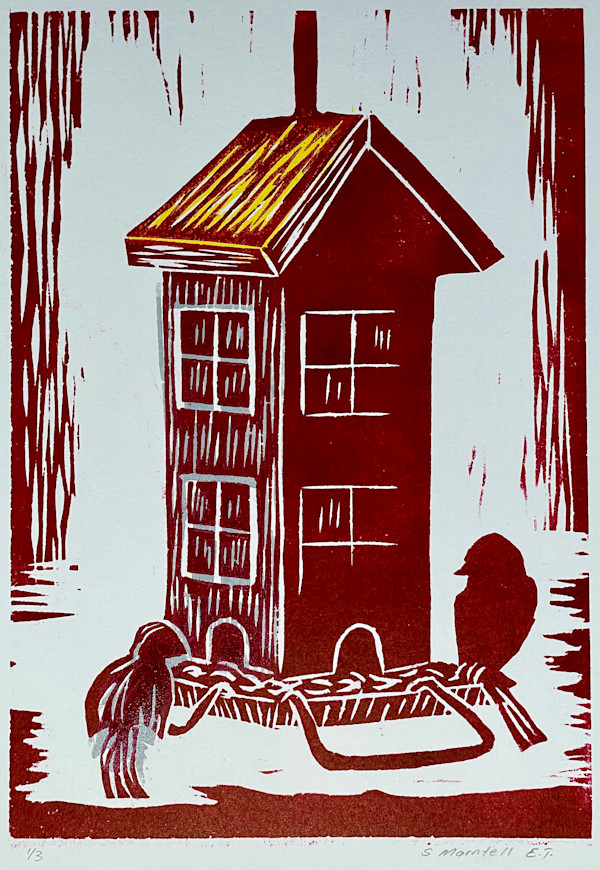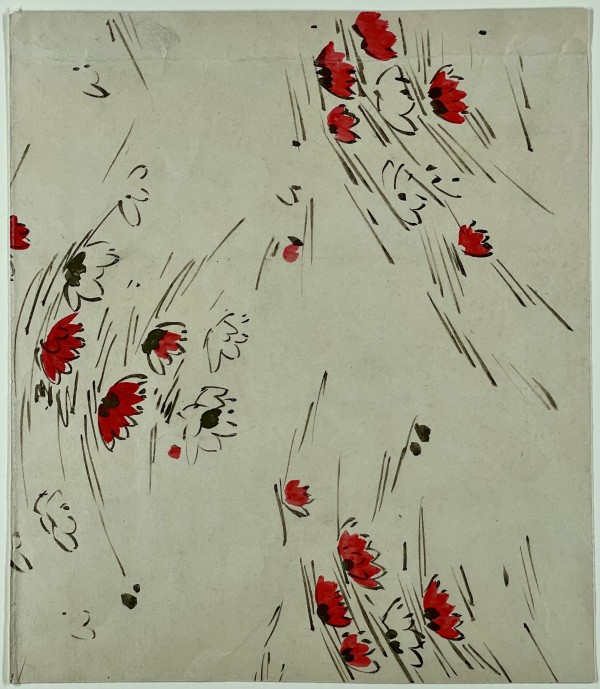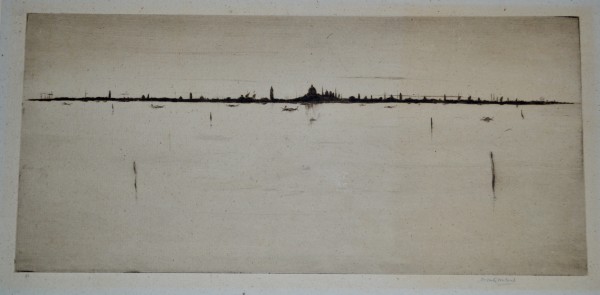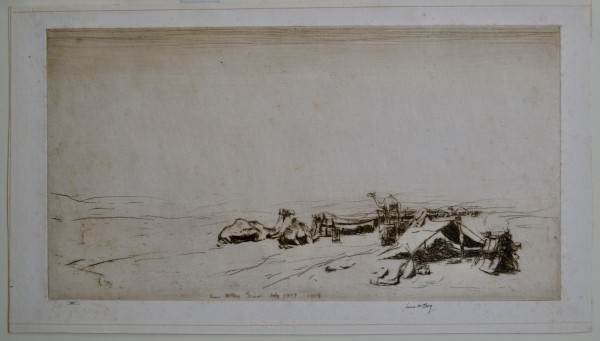- James McBey
- The Desert of Sinai (No. 2), 1917-1919
- Etching & Drypoint
- 7.875 x 13.75 in
- Signature: Signed in ink, "James McBey" lower right-hand corner. Edition in ink, "XVI" lower left-hand corner. Signed, titled and dated in the plate "James McBey Sinai July 1917 1919" lower left-hand corner of the image. Title written in pencil "The Desert of Sinai" extreme lower right-hand corner of the paper.
-
Not For Sale
Hardie 184. Illustrated: Furst, Original Engraving and Etching: An Appreciation.
The Camel Patrol is crossing the Desert of Sinai between hills of drifting sand. (Their route is that over which the Turks retreated to Beersheba after their unsuccessful attack on the Suez Canal.) In the foreground a single rider is passing the skeleton of a camel lying, to his right, on the sand. In the middle distance, the patrol of six riders, and two guides further in front.
James McBey was born on December 23, 1883 in Newburgh, Aberdeenshire, Scotland, educated at his village school, and at the age of 15 years he became a clerk in a local bank. He taught himself how to create etchings on zinc plates from a book on etching "Traité de la Gravure a l'Eau-Forte."
In 1911, he exhibited at the Goupil Gallery in London and his prints were published in both London and Glasgow. In 1916 McBey was appointed official war artist to the Palestine Expeditionary Force, and these drawings are now in the Imperial War Museum. He made several visits thereafter to the Middle East and North Africa. In the 1920s his etchings began to sell at an accelerated price, and he was featured by Malcolm Salaman in the second volume of the series "Modern Masters of Etching" and Salaman also compiled a catalogue of his work, published in 1929. In addition, he had commissions to paint a number of formal portraits, including one of Sir Harry Lauder in 1921.
James McBey died on December 1, 1959 in Tangier, Morocco.
- Subject Matter: War
